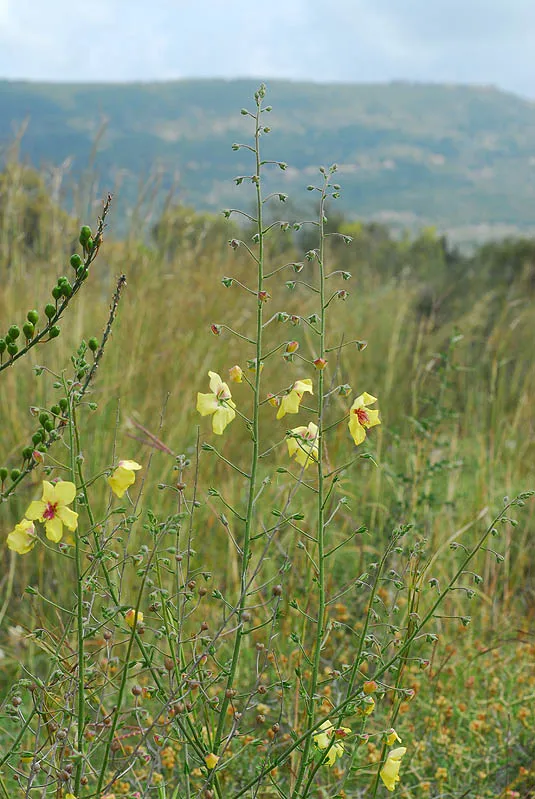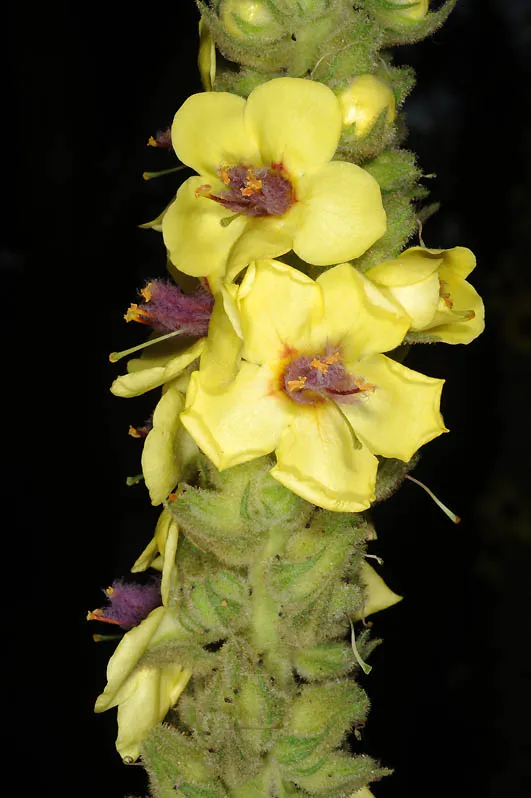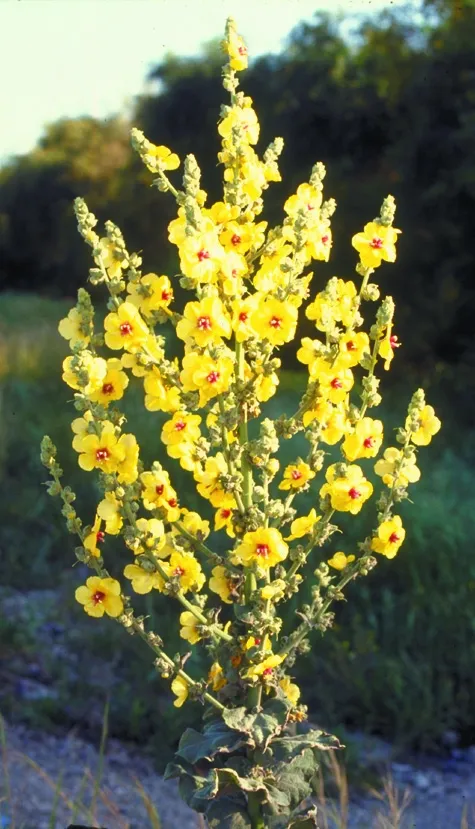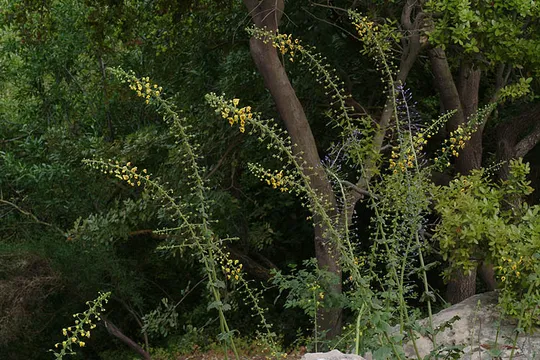Verbascum qulebicum
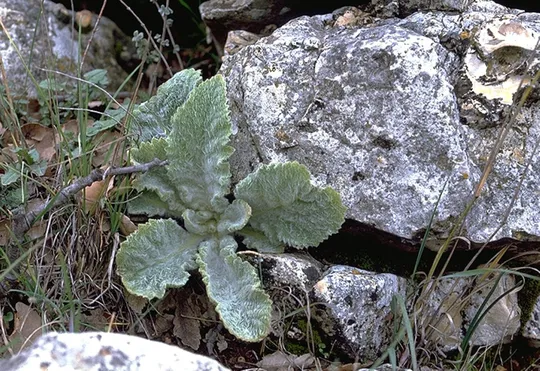
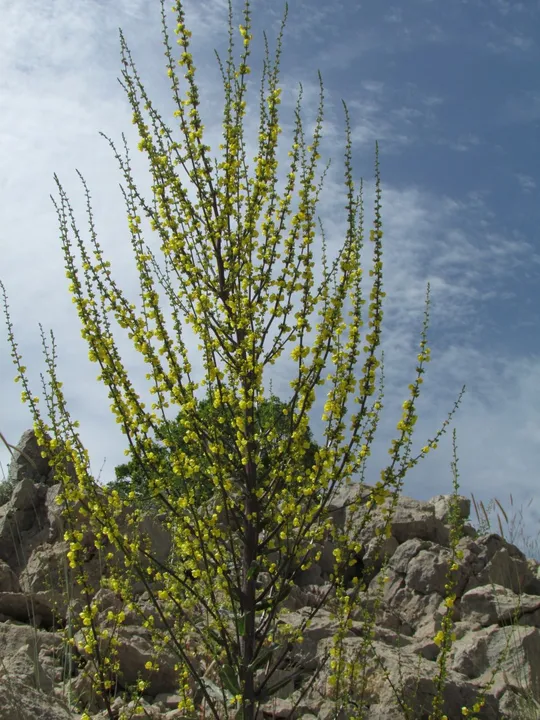
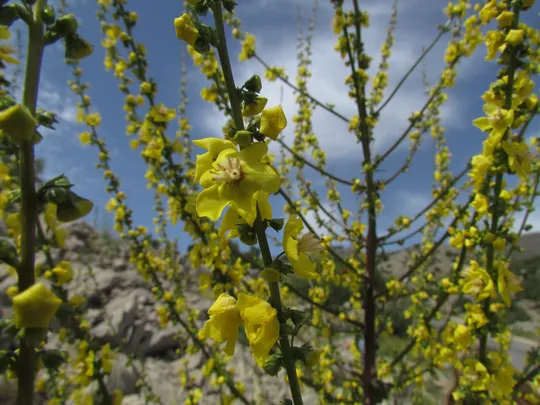
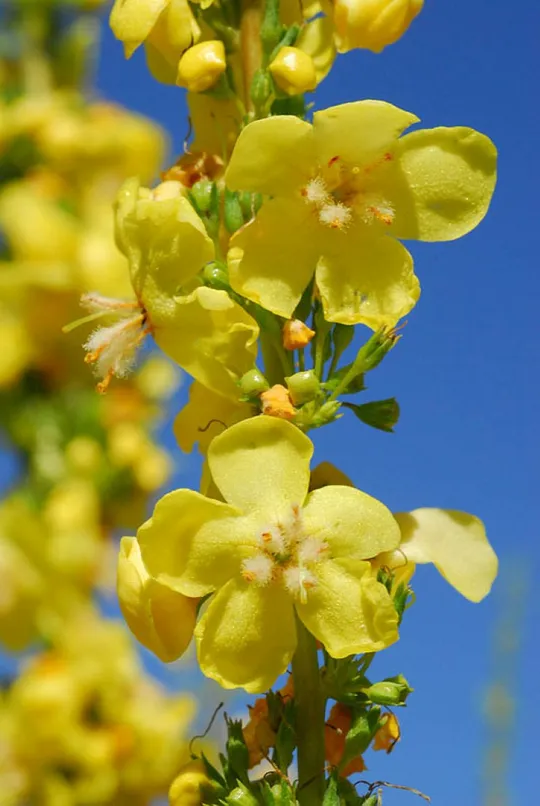
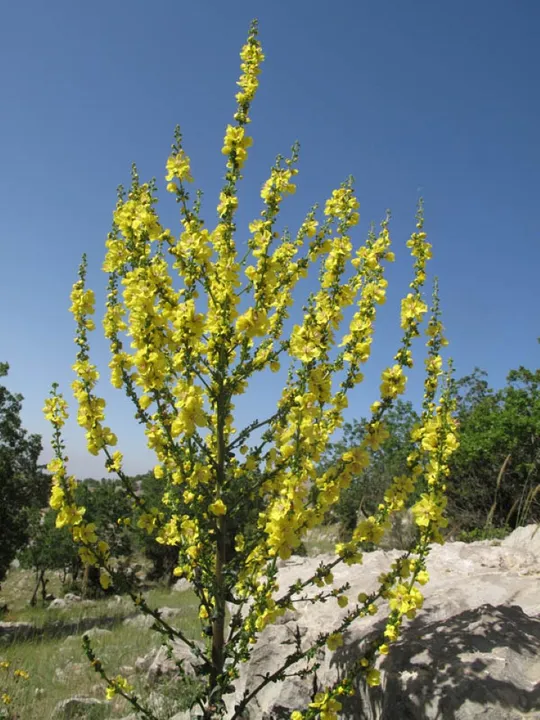
Verbascum qulebicum grows on Mount Hermon and in only two other regions, in the northern Golan and Upper Galilee: in the Galilee, it was known from five locations – Mount Kfir, Mount Meron, En HaZaken, En Smukha, and Mount Hillel. However, during the detailed survey carried out in 1990-91 only two sites were identified both on Mount Hillel. In the Golan, it grows mainly on the northern volcanoes – Mount Avital-Bental, Mount Hozek, Mount Odem, Tel el Mahfi, Giv'at Pazra and Tel Hari'a, at altitudes of 870-1200 meters.
On the Hermon V. qulebicum grows on the mountain zone, in the area of Mount Dov and Namneman Ridge, in open areas and not in closed woodland.
Forest clearings and sunny edges of woods on mountains above 800 meters. In the Golan Verbascum qulebicum grows on roadsides in herbaceous scrubland (bathas) on slopes and in disturbed areas on basalt and tuff. On the Hermon, it is found on rocky limestone slopes in mountainous semi-steppe sunny forest at altitudes between 1,300-1,650 m.
For the genus – see Verbascum berytheum. V. qulebicum is similar in its general appearance and large rosette to V. sinaticum. It differs from it in the cobweb-like hair that covers the plant parts, unlike the short, dense and unpleasant hair cover of V. sinaticum; in the narrow lobes of the calyx compared to the broad lobes of V. sinaticum; and by the shape of the narrow and elongated capsule, compared with the wide ovoid capsule of V. sinaticum. Other large Verbascum species growing in northern Israel are V. caesareum and V. galilaeum, which are also rare. V. qulebicum differs from V. caesareum in its branched inflorescence, and from V. galilaeum in its very large leaves covered with felt-like whitish hairs.
• The number of sites in which Verbascum qulebicum grows is estimated at 15.
• The inflorescence of the species is prominent and would seem prone to picking, but thanks to its repellent hairiness and the short life of the flower, picking is not a threat.
• Nature conservation in the Mount Meron area is good, but the Golan populations are located in built-up areas and are threatened by additional development. All the sites are included in nature reserves, except for Tel el Mahfi in the Golan. The sites in the Golan Heights are located in areas with a high potential for development, some in areas that will be developed with certainty.
• Of the five sites recorded in the Mount Meron block only one was actually found during the rare species survey in 1991. The reason for its great rarity is unclear and this may be the last of the species in this region.
• V. qulebicum grows as a singleton (represented by a single individual) within each population, and therefore the number of plants is very small at each site. The small number of individuals is a serious threat to the species.
A repeat survey should be carried out in the Meron block to try to identify populations of Verbascum qulebicum, two of which should be monitored thoroughly. A site on Mount Hermon should be selected for preservation and monitoring, because a large population grows there. Open spaces at the peak of Mount Hillel should be preserved to prevent the population’s extinction.
Verbascum qulebicum is endemic to Israel and southern Syria, and grows only on the Hermon, in Horan (Ǧebel Druz), the northern Golan Heights and in the upper Galilee. The species was first described by Post, who collected it at Tel Coleb, one of the volcanoes of Bashan.
Verbascum qulebicum is a giant rosette plant, endemic to northern Israel and the Ǧebel Druz that grows only in a very few sites in Israel. The number of individual plants is very small, which is probably a deciding factor threatening the existence of the plant in Israel. The species has great biogeographic importance, and it represents the uniqueness of the high and arid semi-steppe area of the Bashan, Mount Hermon and the eastern Upper Galilee.
Current Occupancy Map
| 1000 squre meter pixel | 5000 squre meter pixel | 10000 squre meter pixel | |
|---|---|---|---|
| number of observations | 0 | 0 | 0 |
| in total pixels | 0 | 0 | 0 |
| Family | Scrophulariaceae |
| Classification | On the endangered species list |
| Ecosystem | Mountainous Semi-Steppe forest and Mediterranean |
| Chorotype | Eastern Mediterranean |
| Conservation Site | Mount Meron and Namneman Ridge in the Hermon |
| Rarity |
1
3
6
|
|---|---|
| Vulnerability |
0
0
4
|
| Attractiveness |
0
0
4
|
| Endemism |
0
3
4
|
| Red number |
1
3.2
10
|
| Peripherality | N |
| IUCN category | DD EW EX LC CR EN VU NT |
| Threat Definition according to the red book | Vulnerable |
 Based on:
Based on:
